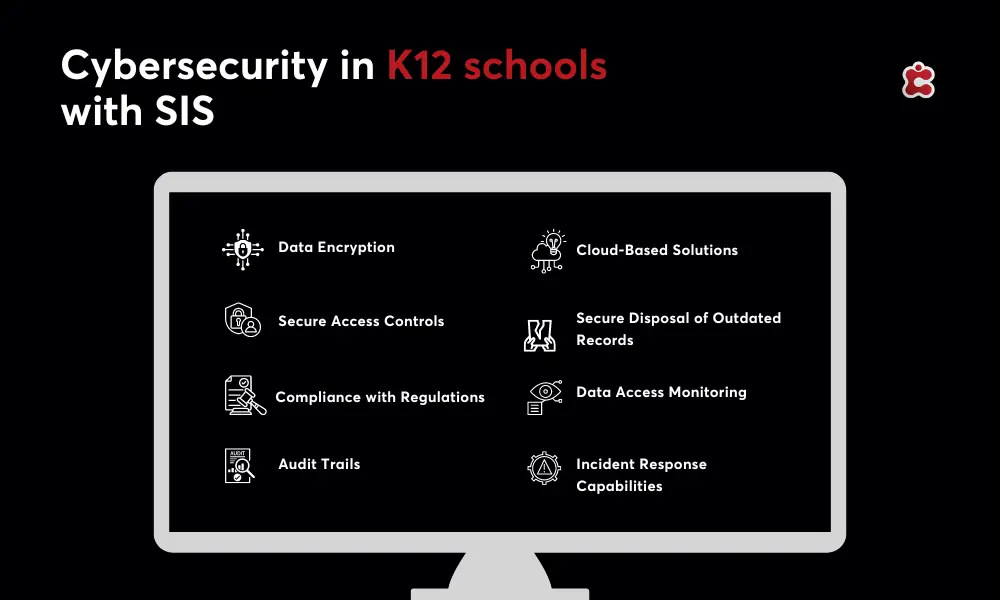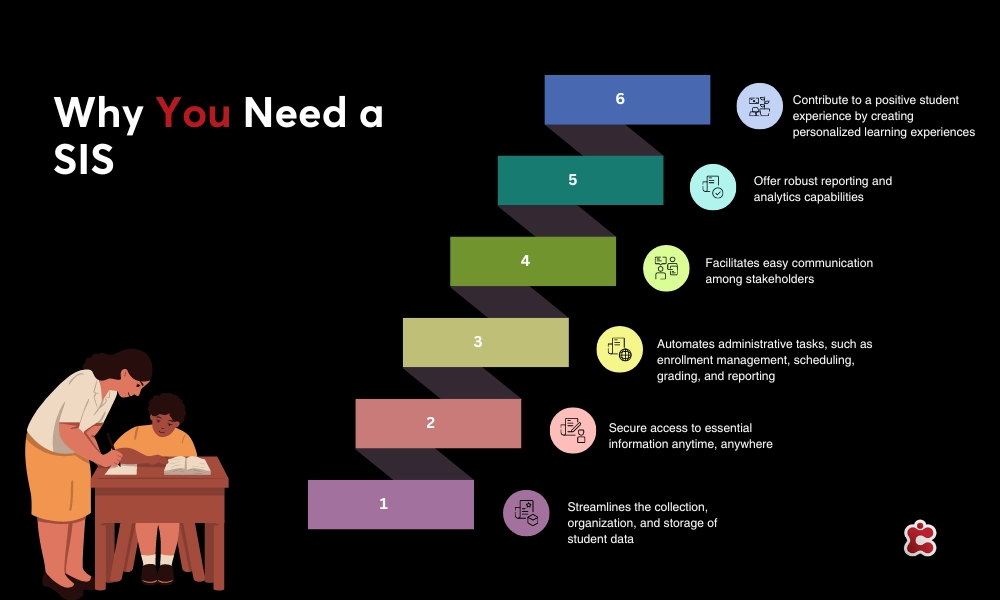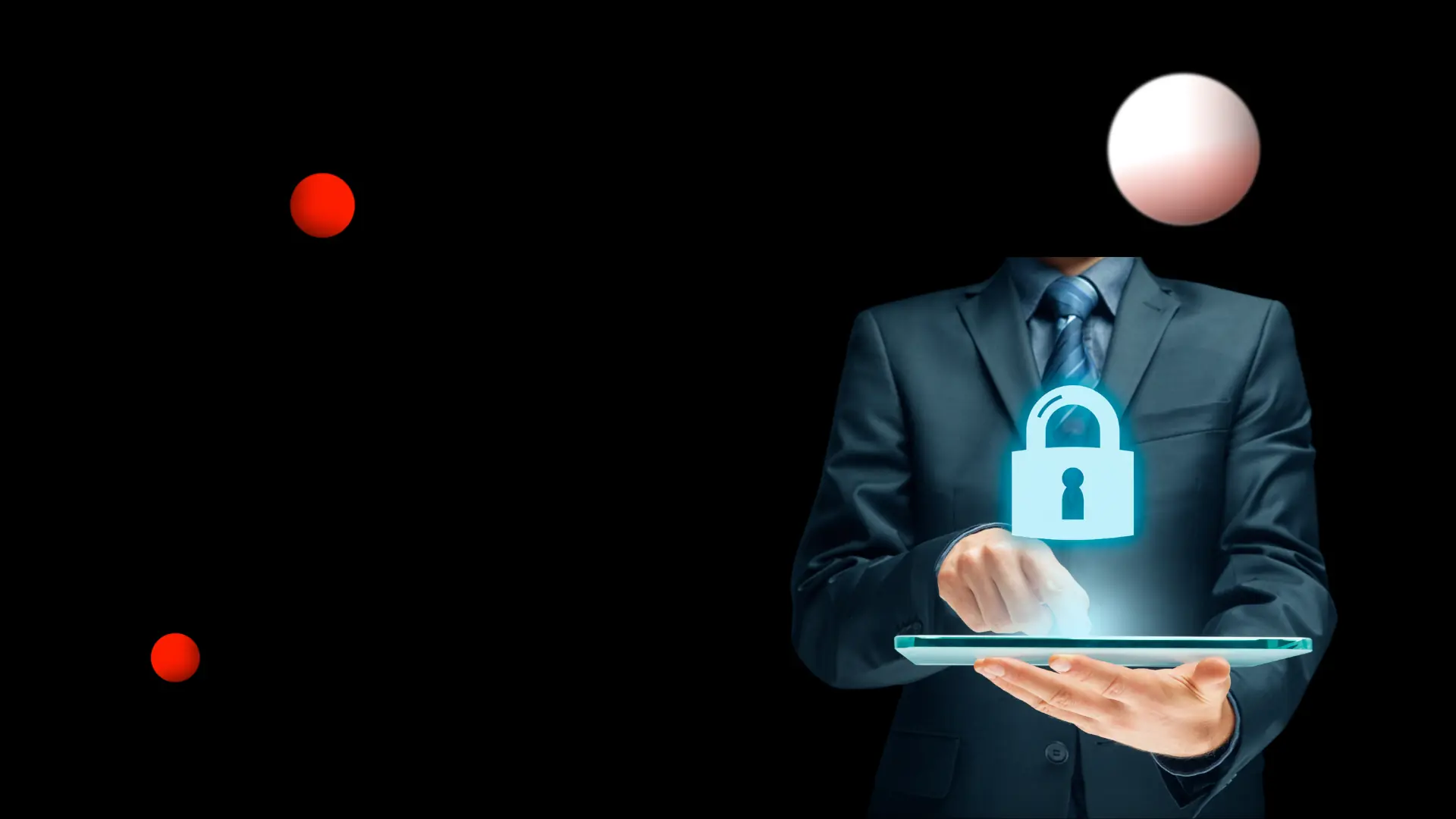When you think of sectors vulnerable to cyberattacks, you might picture large healthcare or financial institutions. But here’s a surprising fact: K12 schools are now major targets for cybercriminals. Reports from 2023 show that K12 schools are the single most targeted industry for ransomware attacks, with 80% of schools reporting an attack.
Why is this happening? Schools handle a lot of sensitive information, from students’ grades to health records, which is valuable to a cybercriminal. And a single security breach can disrupt daily operations, compromise student safety, and even halt educational activities.
But your Student Information System (SIS) is designed to boost your school’s cybersecurity. Think robust data encryption, strict access controls, and multi-factor authentication.
We’ll show you how you can use your SIS to be your school’s cybersecurity superhero. We’ll break down the key features that strengthen your defenses, share practical tips for making the most of your SIS, and more!

Cybersecurity Challenges in K12 Schools
So, what exactly does cybersecurity look like in the world of K12 education? To put it simply, schools are facing an increasing number of cyber threats that can seriously disrupt their operations.
Common Threats:
- Phishing: These are deceptive emails or messages designed to trick staff and students into revealing sensitive information.
- Ransomware: Malicious software that locks down school data until a ransom is paid, often causing major disruptions.
- Data Breaches: Unauthorized access to student and staff data can lead to identity theft and privacy violations.
The consequences of these threats are far-reaching. Schools may face significant data loss, which not only affects student records but also disrupts administrative functions. Financial costs can be hefty, with expenses for recovery and potential fines adding up. Most critically, these attacks can interrupt the learning process, leaving students and teachers in a lurch and impacting educational outcomes.
SIS and Cybersecurity
So, how can a Student Information System become your school’s best ally in the fight against cyber threats? Let’s break it down:
Centralized Data Management
Think of SIS as your school’s digital hub. By centralizing student data, SIS simplifies the process of implementing security protocols. It allows for comprehensive monitoring of who’s accessing what and when making it easier to spot any unusual activity or potential threats.
Access Controls
One of the standout features of SIS is its role-based access controls. This means that only those with the right permissions—like administrators, teachers, or specific staff members—can access sensitive information. This minimizes the risk of unauthorized access and keeps your data secure.
Data Encryption
Encryption is like a secret code for your data. SIS systems use encryption to safeguard information both at rest (when it’s stored) and in transit (when it’s being sent or received). This ensures that even if someone tries to intercept your data, they won’t be able to read it without the proper decryption keys.
Regular Backups
Imagine you’re a firefighter, and regular backups are your fire extinguisher. Automated backups in SIS are crucial for quickly recovering data if an attack does occur. They ensure that you have up-to-date copies of your information so you can restore everything with minimal disruption.
Key Cybersecurity Features in SIS
Now that you understand the importance of cybersecurity in K12 schools let’s explore the features of your SIS that can be used to keep your student data safe.
1. Multi-Factor Authentication (MFA)
Imagine having an extra layer of security on top of your usual password. That’s exactly what MFA offers. It requires users to provide additional verification, like a code sent to their phone or a fingerprint scan, before they can access sensitive information. This makes it much harder for unauthorized users to gain access, even if they have the password.
2. Audit Trails
Think of audit trails as your system’s way of keeping a diary. SIS provides detailed logs of all user activities, from logins to changes made to records. This transparency helps in tracking who did what and when making it easier to spot and investigate any suspicious actions or potential breaches.
3. Compliance with Regulations
Navigating data protection regulations can be tricky, but SIS helps simplify this. It ensures compliance with key regulations like FERPA (Family Educational Rights and Privacy Act) and GDPR (General Data Protection Regulation), protecting student data and ensuring your school meets legal requirements.
4. Incident Response Tools
When a security breach happens, having a quick response is crucial. SIS includes tools designed for rapid response and recovery, helping you address and mitigate issues swiftly. This can make a huge difference in minimizing the impact of a breach and getting back to normal operations.

Tips to Enhance Cybersecurity
Using your SIS to its fullest potential means not only leveraging its advanced features but also implementing best practices to keep your school’s data secure. Here are some tips to help:
- Review and update user permissions regularly to ensure that only authorized personnel have access to sensitive data.
- Provide ongoing cybersecurity training for all staff members. Educate them about recognizing phishing attempts, safe password practices, and how to handle sensitive information securely.
- Make sure data encryption is active both at rest and in transit. This ensures that data remains unreadable even if it is intercepted or accessed without authorization.
- Have a clear plan in place for responding to cybersecurity incidents. This includes defining roles, procedures, and communication strategies to swiftly address and recover from any breaches.
- Schedule automatic backups of your SIS data to ensure you have up-to-date copies. In case of a cyberattack or data loss, having these backups will make it easier to restore and recover your information.
- Keep your SIS software up to date with the latest patches and updates. Software developers frequently release updates to fix security vulnerabilities, and applying these updates promptly helps protect your system.
Classter SIS for Cybersecurity
Classter’s SIS puts all your worries about cybersecurity to rest, offering comprehensive protection against today’s most pressing cyber threats. Our platform is designed not just to manage student information efficiently but also to ensure that it remains secure from potential attacks.
Classter leverages Microsoft Azure for secure and reliable backups and disaster recovery solutions. This ensures that your data is not only protected but also recoverable in the event of an incident.
With Classter’s SIS, you get more than just a data management system—you gain peace of mind knowing that your institution’s sensitive information is protected by top-tier security features.
Ready to elevate your school’s cybersecurity?
Contact us today to learn more about how Classter’s SIS can provide the ultimate protection for your institution.
FAQ’s
K12 schools are prime targets due to the large volumes of sensitive information they handle, such as student grades and health records. This data is valuable to cybercriminals, making schools vulnerable to ransomware and data breaches.
Common threats include phishing attacks, where deceptive messages trick individuals into revealing sensitive information; ransomware, which locks data until a ransom is paid; and data breaches, which involve unauthorized access to confidential student and staff information.
Classter’s SIS offers robust protection through advanced data encryption, multi-factor authentication, role-based access controls, and secure backup solutions. These features work together to safeguard sensitive student information.

